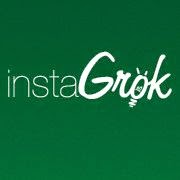In the wake of the Common Core Standards, a slew of websites have sprung up to provide teachers with resources to teach nonfiction and make it engaging. In addition, many of these websites have also addressed the different reading levels present in an average classroom. Most of the websites choose and adapt high interest articles that appeared in other new outlets. These web tools have become in invaluable resource for the classroom teacher looking to make nonfiction more engaging and attempting to differentiate nonfiction based on a student�s reading level. When looking for engaging nonfiction to help students increase their reading abilities or to pair with the fiction we are reading, these are the five websites I use in my search.
Newsela
This website is the most popular entry in this category. While not every feature is not free, much of the content is usable without having to pay. Students and teachers can create an account using their Google login credentials. This account gives access the large selection of news articles on Newsela. Students can read the articles and even take quizzes. The primary feature of Newsela is the ability to adjust the Lexile level of the article. This feature allows the teacher or student to differentiate articles for each student in the teacher�s class. Teachers can also pay a fee to have access to data about their students reading abilities and progress on standards.
DailyRead
This website also has high interest articles geared toward students. The articles tend to be short, but teachers and students can adjust the reading level of the article. One feature that makes this web tool unique are the links to articles on the same subject along with that articles reading level. These links allow the reader to go more in depth on the same topic. Each article is also followed by a �Yes/No" poll where students can vote and view the results. Finally, each article has a short response question that students can complete and would function as a great quick write.
The Smithsonian
The Smithsonian offers a suite of resources for kids from kindergarten to high school in English and Spanish. Collectively the resources are known as TTribune which refers to TTJunior for grades K-4, TweenTribune for grades 5-8, TeenTribune for grades 9-12, and TTEspanol for Spanish speaking students. Students can read high interest articles, adjust the reading level, and even answer a critical thinking question. Students can also comment on the article after their comment has been approved by the teacher.
YoungCurrent
This website also collects child-safe content from across the web. While the Lexile level of each individual article can not be adjusted, students are provided with a list of articles at their reading level. They can also practice vocabulary and receive reports about their weekly progress.
 Curriculet
Curriculet
Curriculet is better known for being a platform for providing a tool to help teachers create quizzes, questions, and annotation tools for the texts they are reading in class. But they have partnered with USA Today and therefore provide a library of nonfiction articles that can be read through their platform. As of the writing of this blogpost, Curriculet offers a 45-day free trial and then charges money for access to the articles after the trial period.
I don�t use any one of these tools exclusively, although Newsela seems the best match of free and useful. So if you are looking for nonfiction to use in your classroom, or you only know about Newsela and are looking to check out other resources, any of the tools on this list should help.



















